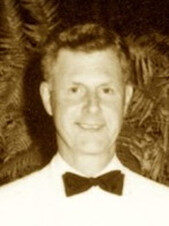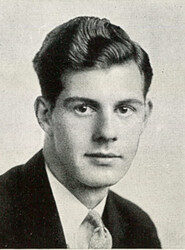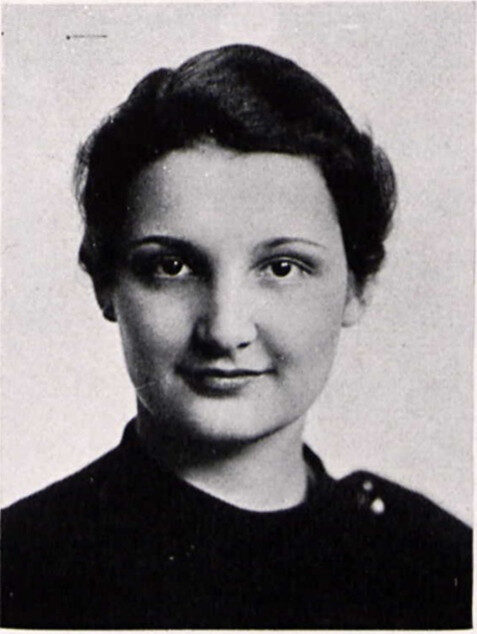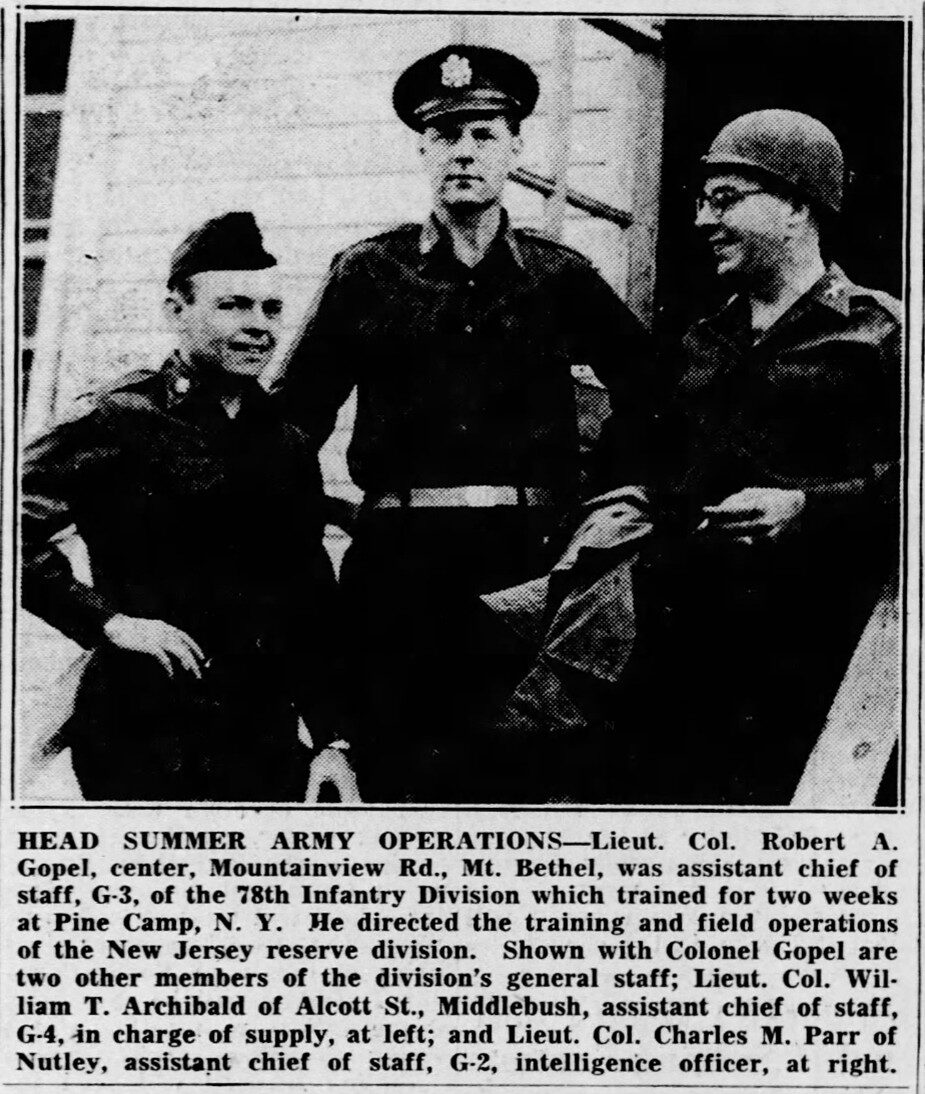Soldier Story: Robert Arthur Gopel
Soldier Story

Robert Arthur Gopel
Major
442nd Regimental Combat Team
Commander, 2nd Battalion
Robert Arthur Gopel was born on February 13, 1910, in Waterbury, Connecticut, to Fredrick Arthur Goppelt Jr. and his wife Catherine (Gearing) Goppelt. In the 1910 Federal Census, dated April 21, Robert was listed as 3 months old and living with his parents - whose last name was spelled Goppelt – and older siblings: brother Alfred Charles and sister Ruth M. Older brother Walter L. was born and died in 1905. The family resided on Woodside Avenue and his father was foreman at a brass factory. Both of his grandmothers were born in Germany. By 1920 the family was living at 426 Central Avenue and his father was employed by a toy manufacturer. Mother Catherine Goppelt died in 1927.

Gopel, 1934 University of Illinois senior
By the time Robert went to college at the University of Illinois in Urbana, he had begun to spell his last name as Gopel rather than Goppelt. As a freshman in 1931, he became a member of Alpha Chi Rho fraternity. During his senior year, Gopel was class Vice President for the first semester and a member of the Senior Ball Committee.
Below: Ann Avery, 1934 University of Illinois

After graduating in June 1934 with a Bachelor of Science degree in Education, Gopel moved to Essex County, New Jersey, where he was employed as an electrical supplies salesman. The following year, he married his college sweetheart, Ann Minnie Avery of Peoria, Illinois. Ann, born January 10, 1914, was the daughter of George Luzerne and Miriam (Hunter) Avery. Robert and Ann’s two children – a daughter and a son – were born in the next few years.
In 1940, they were living with their son and daughter at 12 Sunset Road in Livingston, Essex County, New Jersey. He was employed as an electrical supplies salesman. By the beginning of 1941, he was working for the Jersey Tire Company.
Gopel entered the U.S. Army on August 28, 1941. The following year, 1942, he and his family were living at 621 North Taylor Streer, Little Rock, Arkansas, where Gopel was stationed with the U.S. Army. By August 1943, Major Gopel was the Executive Officer of the 11th Infantry Regiment, stationed at Camp Fannin, in Tyler, Texas. He was in charge of training at the new IRTC (Infantry Replacement Training Center) located at Camp Fannin. After graduating from the Command and General Staff College at Fort Leavenworth, Kansas, he was assigned to the 442nd RCT.
Initially, Gopel served on the 442nd Regimental staff as the S-3 officer, who was in charge of operational planning and training. The 442nd arrived in Italy for the Rome-Arno Campaign on May 28, 1944. It was next sent to France for the Rhineland-Vosges Campaign in October-November. In November 1944, the 442nd departed for southern France and the Rhineland-Maritime Alps Campaign. Just prior to departing France at the end of March 1945, Gopel became commander of 2nd Battalion, when its commander Lieutenant Colonel James M. Hanley became the 442nd Executive Officer. The 442nd returned to Italy for the Po Valley Campaign. Gopel remained during the occupation after the Germans surrendered in Italy on May 2, 1945.
On May 21, 1945, Major Gopel and Chaplain Hiro Higuchi held a memorial service for the men of 2nd Battalion who had died in the Po Valley Campaign. On July 28, 1945, 2nd Battalion was awarded the Distinguished Unit Citation for its actions in the Vosges Campaign the previous fall – “striking the enemy paralyzing blows from all directions while storming a hill near Bruyères, France, October 19.” It was also credited with eliminating nearly an entire German company near Biffontaine, France, October 28 and 29, and thus checking an enemy threat to the flanks of the U.S. 3rd and 45th Divisions. On September 4, 1945, in Livorno, Major Gopel’s 2nd Battalion was formally presented two Distinguished Unit Citations by Lieutenant General Lucian K. Truscott for breaking through German defenses in the Vosges Campaign and for also spearheading the Fifth Army’s spring offensive in the Po Valley Campaign.
Major Robert A. Gopel was discharged from the Army on January 2, 1946, and returned to the United States.
For his military service in World War II, Major Gopel was awarded the following: Bronze Star Medal with one oak leaf cluster, Good Conduct Medal, American Campaign Medal, European-African-Middle Eastern Campaign Medal with four bronze stars, World War II Victory Medal, Army of Occupation Medal, Distinguished Unit Badge with oak leaf cluster, and Combat Infantryman Badge. He was posthumously awarded the Congressional Gold Medal on October 5, 2010, along with the other veterans of the 100th/442nd Regimental Combat Team. This is the highest Congressional Civilian Medal.
After arriving back in the States, Gopel returned to Warren Township, New Jersey, where his wife had remained during the war. He also became the district merchandise manager for Westinghouse Electric Corporation based in Baltimore, Maryland. He and his wife continued to live in New Jersey.
In December 1946, he was appointed Chairman of the Planning and Zoning Committee for Warren Township. He and his wife purchased nearly 5 acres of land and built their home at Broadway and Mountain Avenue. In 1947, Gopel became President of the Warren Township Civic Association. Gopel also joined the U.S. Army Reserve, 78th Infantry of New Jersey, and became a member and vice president of the Watchung Chapter, Army Reserve Officers Association. The following year, he became its president. In May 1948, he accepted a position on the Board of Education for Warren Township.
During the summer of 1948 he spent two weeks of active training along with 356 New Jersey Army Reserve officers and men at Pine Camp [later became Fort Drum], New York. Gopel served as the 78th Infantry Assistant Chief of Staff, G-3, in charge of training and field operations.

center - Lt. Col. Gopel in 1948
In October 1949, Gopel was hired by Koppers Company, a large manufacturing firm headquartered in Pittsburgh, Pennsylvania, as a member of its central staff sales department.
By 1950, he and his family had moved to 1010 Martha Avenue in Mt. Lebanon, Pennsylvania. He was employed by Koppers Company. By the following year, he was Director of Sales Training for Koppers. On January 1, 1954, his book, Sales Know-How, was published by Printer’s Ink Publishing Company (currently out-of-print). Exactly one year later, his second book, Managing Salesmen, was published by Printer’s Ink. In 1963, Robert’s father, Frederick A. Gopel, died in New Jersey, where he resided with his son Alfred C. Gopel and family.
In the late 1960s, Robert Gopel founded the Pittsburgh Management Center, which conducted 2-day seminars for large corporations and small business on business law, taxes, finance, marketing, sales, labor relations, and government procurement. The Center started in the wider Pittsburgh area and expanded into Ohio, with Robert Gopel traveling to teach at the seminars, while Ann managed the business from their home in Upper St. Clair. During his career, he served on a Congressional Commission to investigate government purchasing practices. The report he wrote was presented to the U.S. Congress.
Their daughter and her husband and three children moved to New Zealand in 1971. Several years later, Robert and Ann began spending half of each year with them in New Zealand, where they enjoyed fishing and golfing. On December 18, 1974, their son Richard Gopel died of cancer at the age of 35. He was inurned at Greenlawn Cemetery in Columbus, Ohio, and was survived by a wife and two children. In 1991, Robert and Ann discontinued the yearly commute to New Zealand, and in 1994 they moved into Friendship Village, a retirement community in Upper St. Clair.
Robert A. Gopel died of a stroke on March 24, 1999, at the age of 89. A memorial service was held for him in Friendship Village’s St. Clair Room on April 10. Survivors included his wife, daughter, five grandchildren, and five great-grandchildren.
He was inurned in the columbarium at Westminster Presbyterian Church in Pittsburgh, Pennsylvania. His wife Ann died at the Friendship Village retirement community on March 25, 2004, and was inurned next to her husband. She was survived by their daughter Nancy Malcolm of Nelson, New Zealand, five grandchildren, and six great-grandchildren.
Researched and written by the Sons & Daughters of the 442nd Regimental Combat Team in 2025.